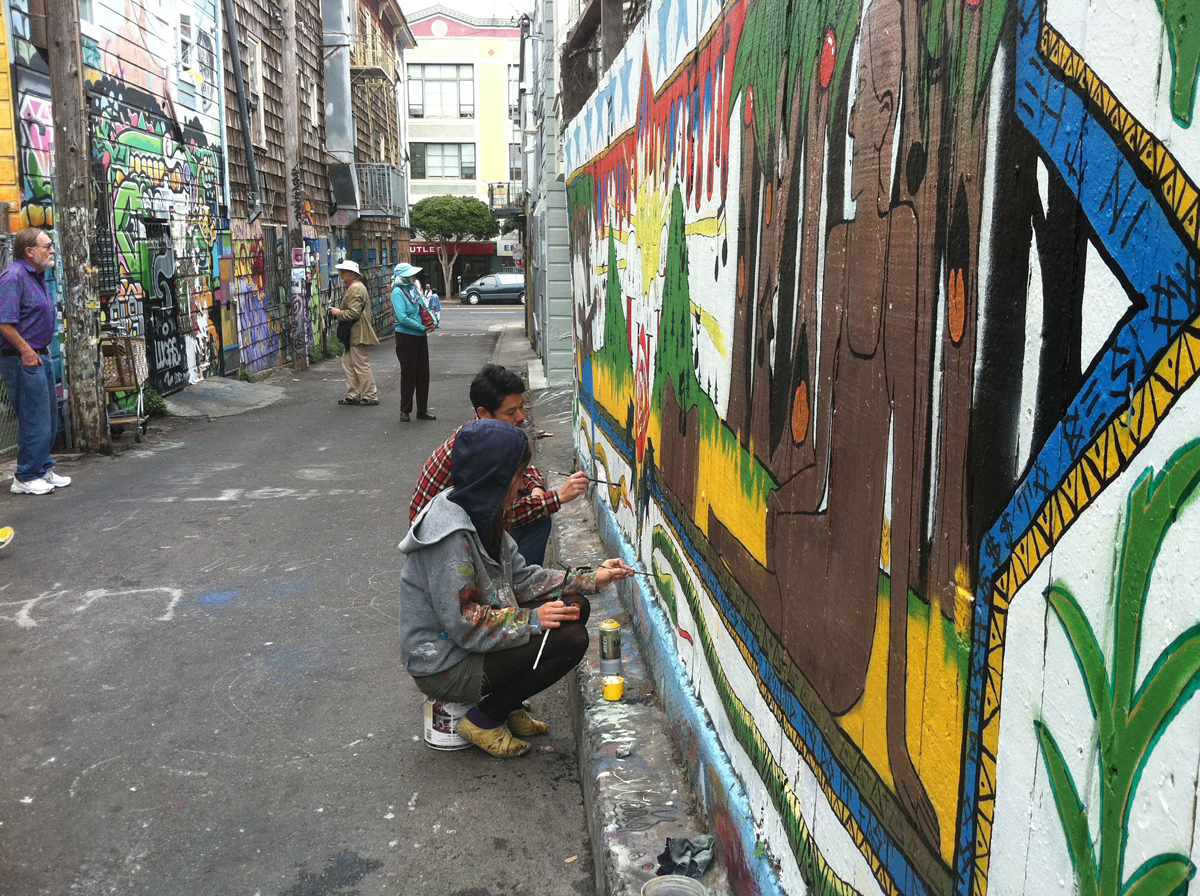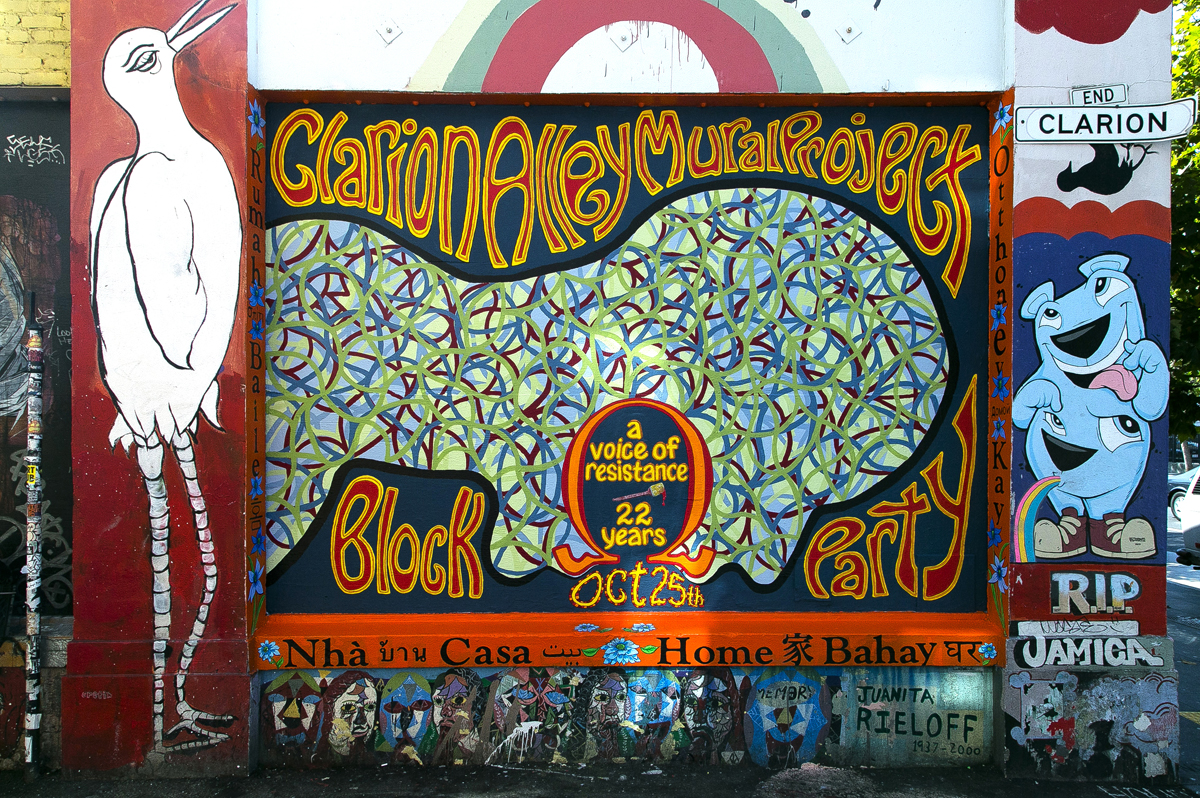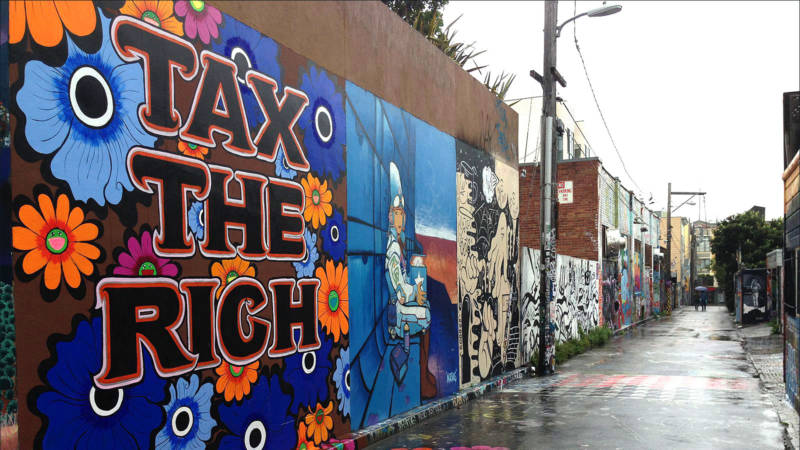Twenty-four years after its founding, the Mission’s Clarion Alley Mural Project (CAMP), a community-based arts space occupying the walls along a 560-foot-long alley between 17th and 18th Streets and Mission and Valencia Streets in San Francisco’s Mission district, unveiled its first website on Wednesday.
The launch of the comprehensive online archive comes with the news of CAMP’s decision to become a nonprofit organization to better support artists’ intellectual property rights and disseminate the social and political messages of the alley’s murals.

Since 1992, Clarion Alley has been the site of more than 700 murals, many created by Bay Area and international artists known for their street art and activism. Now, thanks to CAMP’s thorough documentation efforts, viewers can visit the alley remotely, traveling through time to see, among other eye-catching works, Alicia McCarthy’s 1998 mural Where the Bitter End Meets the Rainbow, Aaron Noble and Rigo 23’s 2000 mural Superhero Warehouse and Mel C. Waters’ more recent homage to Prince.
The documentation also captures CAMP’s overarching themes of education, resistance and community celebration. The Dope Project’s 2013 mural Narcania VS Death offers a comic book-style narrative of drug overdose prevention. In a 2014 response to the Mission Playground soccer field confrontation, Ivy Jeanne McClelland painted the powerful This City is Not For Sale. Installed this year, D8’s stark Because White Men Can’t Police Their Imagination and José V. Guerra Awe’s Rise in Power condemn the nationwide epidemic of POC deaths in “officer involved” shootings.

Clarion Alley has long been a stopping point on walking tours of the Mission and a frequent draw for locals and tourists alike. CAMP estimates over 200,000 people visit the corridor each year.


